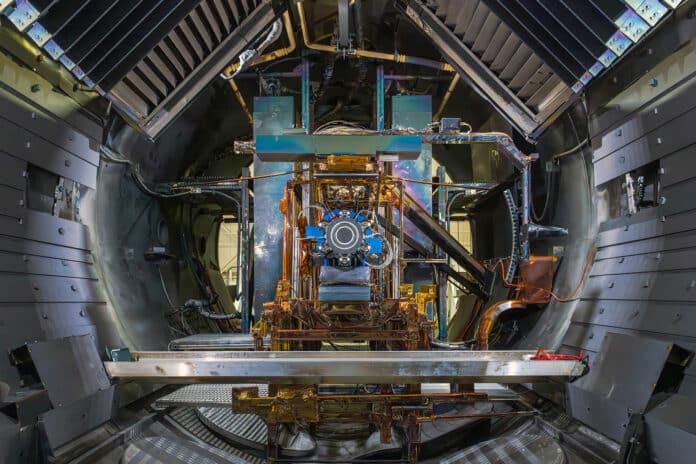Aerojet Rocketdyne and NASA’s Jet Propulsion Laboratory are conducting qualification testing on the cutting-edge solar electric propulsion (SEP) thrusters that will change the in-space propulsion game.
The completion of this work will see these innovative thrusters fly on Gateway beginning in 2025, making it the most powerful SEP spacecraft ever flown. Gateway is a lunar space station that will serve as an important part of NASA’s Artemis program, which will land the first woman and first person of color on the Moon.
Gateway is a 60kW-class spacecraft, 50 of which can be dedicated to propulsion, making it about four times more powerful than current electric propulsion spacecraft, NASA said in an older post. Aerojet Rocketdyne has built the Advanced Electric Propulsion System (AEPS) that provides 12 kilowatts of propulsive power – over two times more powerful than current state-of-the-art in-space electric propulsion systems.
The thrusters will also take advantage of an extremely high fuel economy at lower thrust, providing mission flexibility and capabilities not achievable using traditional chemical propulsion systems.
Three AEPS thrusters will be used on the Power and Propulsion Element (PPE) to maneuver Gateway during its planned minimum 15-year mission. But the AEPS must undergo qualification testing before being certified to fly on Gateway.
During the testing campaign, the team will use two qualification models nearly identical to the thrusters that will fly on PPE. One of these model thrusters will undergo acceptance testing to make sure it was built correctly. It will then be subject to extreme vibration, shock, and thermal conditions, similar to what it will experience during launch and flight operations.
The second qualification unit will undergo a wear test beginning in 2024 that mimics the anticipated conditions the AEPS will experience during Gateway’s initial orbit raising and transition to lunar orbit. NASA expects the thrusters to operate for 23,000 hours total during a nearly four-year test campaign inside NASA Glenn’s massive vacuum chambers.
“AEPS is truly a next-generation technology,” said Clayton Kachele, the AEPS project manager at NASA’s Glenn Research Center in Cleveland. “Current electric propulsion systems use around four and a half kilowatts of power, whereas here we’re significantly increasing power in a single thruster. That capability opens a world of opportunity for future space exploration, and AEPS will get us there farther and faster.”
The engineers say that high-power electric propulsion is critical for future crewed transportation systems that will be key in helping NASA explore more of deep space beyond the Moon.
